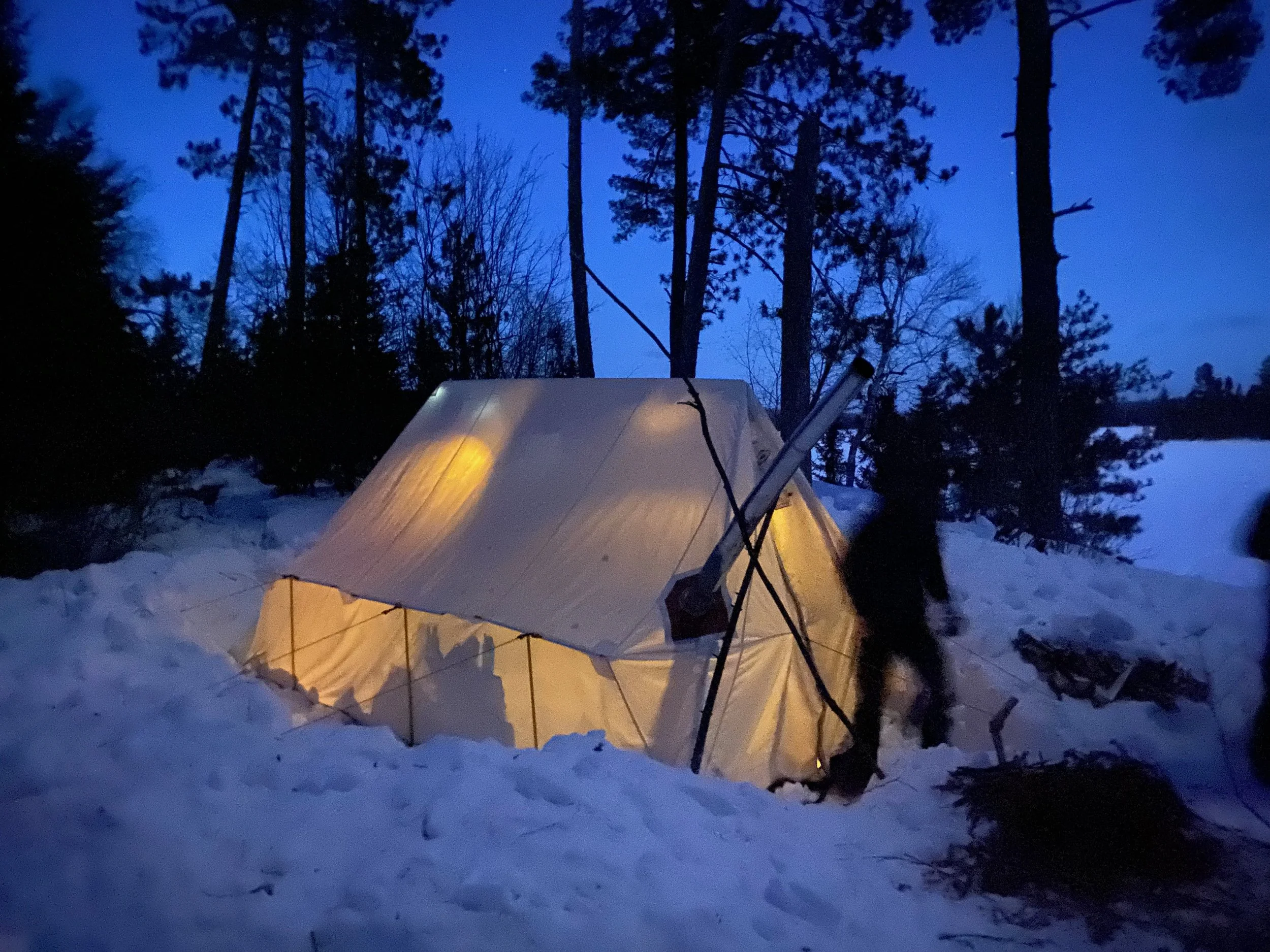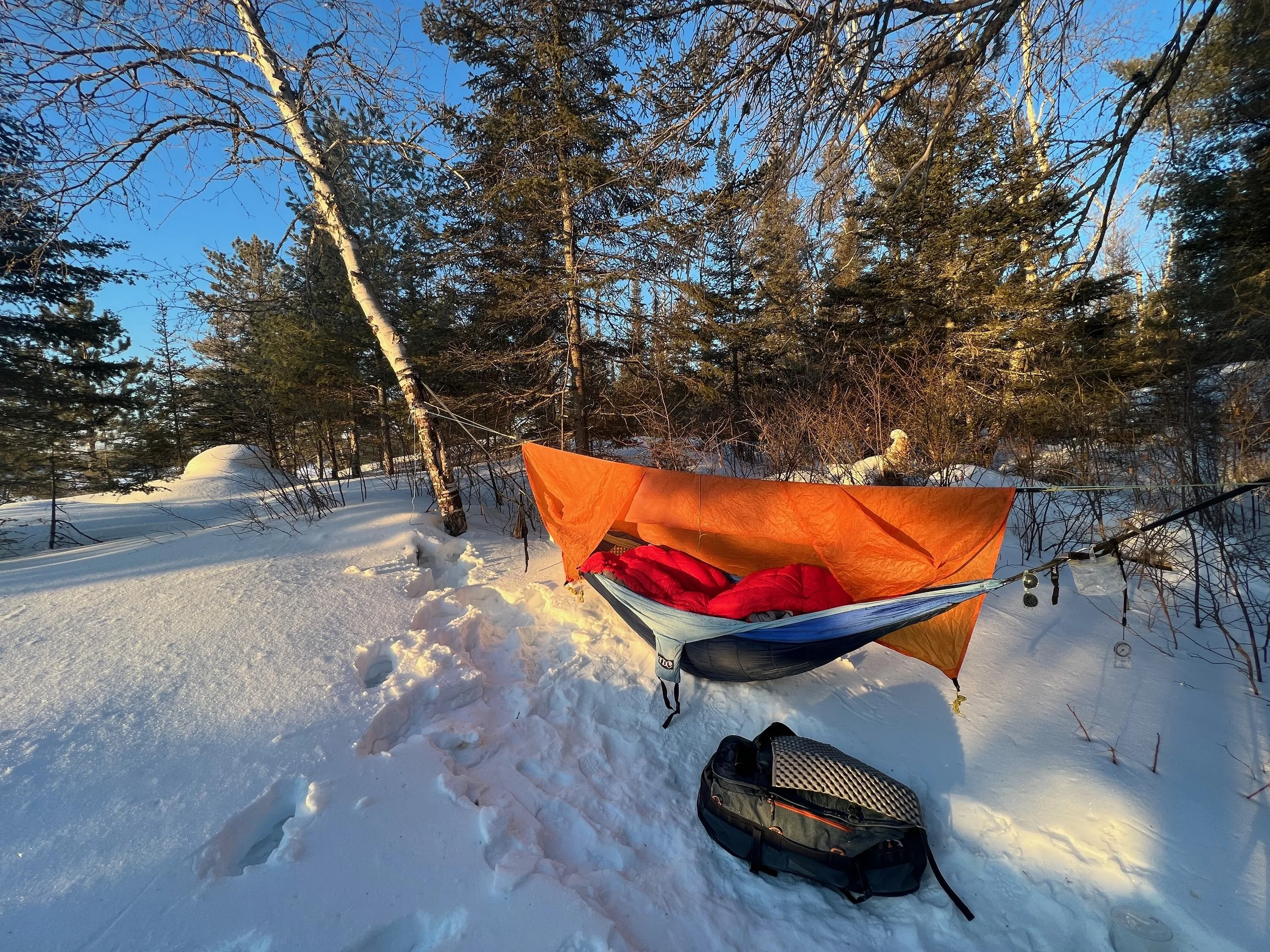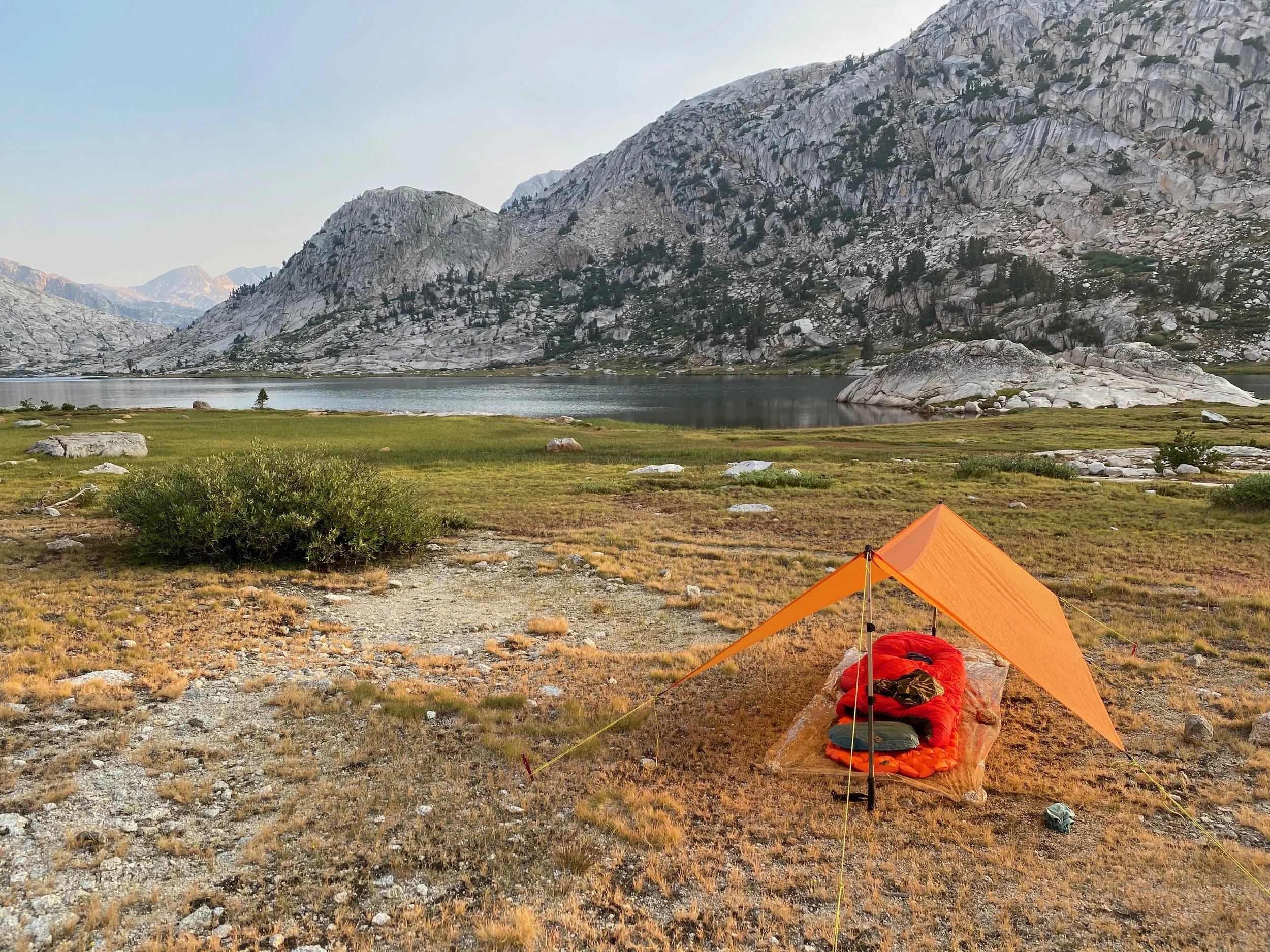Favorite Winter Camping Shelters
Curious about winter camping but not sure about which shelter is best for you? As a wilderness guide in Northern Minnesota, I’ve had a lot of opportunities to try out different shelters.
Having experiences all kinds of winter weather, I’m sharing my top 4 winter camping shelters so that you can choose what is right for you.
Hot Tent with wood stove in northern Minnesota.
Traditional Hot Tent
Hot tents come in all shapes and sizes, but the classic is the canvas wall tent. These are the gold standard of comfort and durability. Used for decades, online sources tell us that “wall tents have been used for centuries. Paintings from 1544 illustrate wall tents with pavilions and wedges, a model of a wall tent from the mid-17th century can be found in a European museum, and there are drawings of wall tents being used in a military setting from 1740. Wall tents are known to have also been used by prospectors, trappers, and by soldiers during the civil war.” source
Folks who seek comfort, warmth and durability will love these tents. They’re great for basecampers and folks not travelling far or everyday, however it will handle long distances well. Larger styles are great for families and groups.
PROS
These tents are heated by a portable wood stove. Supported by strong and sturdy aluminum poles, they’re designed to combat snowloads. Usually made of marine-grade canvas, these tents are water repellant, mildew resistant and flame retardent. Their the go-to tent used by outfitters and wilderness guides. They’re sold in different sizes.
CONS
Heavy and bulky. Well made tents will cost you. They’re a long-term investment. Care is needed to increase the longevity of the tent and stove.
Favorite Wall Tent Maker
Tipi Hot Tent in the Boundary Waters Canoe Area Wilderness.
Tipi Hot Tent
These are the jaguars of the tent world. They are lightweight and compact. Made of nylon and a single carbon fiber pole, they’re designed for folks to want to lighten their kit and possibly get in some miles.
PROS
Very lightweight and compace–under 5 pounds for a 6 person tent. Made of waterproof or water resistant fabrics. Generous floor space. Can be used with or without a portable wood stove.
CONS
Can be prone to pinholes from sparks coming from the stove pipe. Be sure to use a spark arrestor. These can be easily patched. Well made tents will cost you. They’re a long-term investment. Care is needed to increase the longevity of the tent and stove. Prone to condensation which can be managed by venting.
Favorite Tipi Tent Maker
Mid-March in northern Minnesota. Temps at night averaged 15º.
Hammock
Some wouldn’t think a hammock would work for winter camping, but it can be a great option for the solo adventurer. I use one as a wilderness guide quite a bit because it’s lightweight, compact, quick to set up and warmer than the ground. This option is also nice for the winter backpacker and campers who don’t want to wonder about flat ground for a tent. Choose a bigger tarp depending on the weather.
PROS
Made of lightweight nylon and compact. Great for the solo adventurer or winter backpacker. Inexpensive hammocks can work well and they can be configured with or without a tarp. Options for all budgets. Comfortable and warm when coupled with an underquilt. Can be set up most anywhere. Tarps and hammocks come in different sizes.
CONS
May feel claustrophobic or unwieldly. Hard to get in and out of (especially at night when you have to go to the bathroom). There is space for only one person. They can take time to learn how to properly hang. Not as reliable in extreme weather. May offer less privacy.
Eventually I’ll replace this photo with my winter tarp set-up. In the meantime, this is from a cold night in the Sierra Nevada at 11,000’ when temps got down to 28º. I ended upadjusting the tarp, lowering it into “storm mode” to trap in heat.
Tarp
This is probably the most extreme style of winter camping. The learning curve is higher and caution must be made when bringing this type of shelter. Made of nylon and usually set up with trekking/ski poles, tarps are very lightweight and compact. This type of shelter is best suited for winter campers with plenty of experience and suvival skills. Use with a heavy duty survival blanket or waxed canvas/truck tarp combo for under your sleeping gear.
PROS
These are made of lightweight nylon and are waterproof. They can be set up using one or two trekking poles, or trees. Great for the solo adventurer, winter backpacker or camper who wants a super light kit. Come in many sizes. Options for all budgets.
CONS
Previous winter camping experience and survival skills are strongly recommended when using this type of shelter. The user must be able to set it up with different configurations based on weather conditions and location. Will not protect in all weather conditions.
Favorite Tarp Maker
Advertising
As an Amazon Associate, I earn a small commission from qualifying purchases at no cost to you. I recommend products I’ve used myself and found to be reliable.






